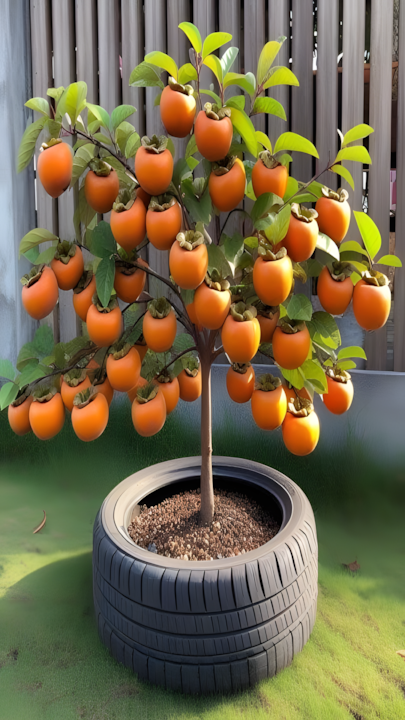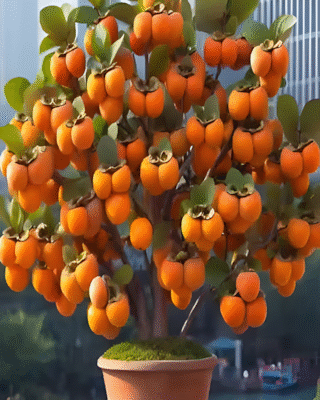Skills in Growing Persimmon to Harvest More Fruit
Persimmons are among the most rewarding fruit trees you can grow, offering delicious, sweet fruit and beautiful autumn foliage. However, getting a healthy harvest requires more than just planting a sapling and waiting. Growing persimmon trees successfully depends on a combination of skills, patience, and good gardening practices. Whether you’re a backyard gardener or looking to start a small orchard, mastering a few key skills will help you harvest more fruit year after year.
1. Choosing the Right Variety
The first step toward a good persimmon harvest starts with selecting the right variety for your climate and purpose. There are two main types: astringent and non-astringent persimmons. Astringent varieties, like the well-known Hachiya, must be fully ripe and soft to be sweet. Non-astringent types, like Fuyu, can be eaten while still firm. Some varieties thrive in warmer regions, while others can tolerate colder climates. Research or consult local nurseries to choose cultivars that are proven performers in your area.
2. Mastering Proper Planting Techniques
Planting your persimmon tree correctly is crucial for its health and future productivity. Choose a sunny spot with well-drained soil. Persimmons don’t like soggy roots, so avoid low-lying areas where water collects. Dig a hole twice as wide and just as deep as the root ball. Loosen the soil around the hole to encourage roots to spread. When planting, keep the graft union (if there is one) above the soil line to prevent rot. Backfill the hole, gently firm the soil, and water deeply.
3. Developing Soil Management Skills
Healthy soil means a healthy tree. Persimmons prefer slightly acidic to neutral soil (pH 6.0–7.5). Test your soil before planting. If needed, amend it with organic compost to improve structure and fertility. Adding mulch around the base helps retain moisture, suppress weeds, and maintain even soil temperatures. Keep mulch a few inches away from the trunk to prevent disease and rot.

4. Knowing How to Water Correctly
Young persimmon trees need consistent moisture until established, usually the first two years. Deep watering once a week is better than frequent shallow watering. Once mature, persimmons are fairly drought-tolerant but will produce bigger and better fruit with adequate water during dry spells, especially during fruit development. Avoid overwatering as it can cause root rot.
5. Pruning for Productivity
Learning how to prune persimmon trees properly is a vital skill for maximizing fruit yield. Prune young trees to establish a strong framework with an open center or modified central leader shape. This allows sunlight and air to penetrate the canopy, reducing disease and encouraging fruiting. Remove dead, damaged, or crossing branches annually. Light pruning after harvest helps maintain shape and size. Avoid heavy pruning during fruiting years, as it may reduce yield.
6. Understanding Pollination Needs
While some persimmon varieties are self-pollinating, others benefit from cross-pollination to set more fruit. Know whether your variety needs a pollinator tree nearby. Planting compatible varieties can improve fruit set and yield. Bees and other pollinators play a vital role, so avoid using harmful pesticides during flowering.
7. Managing Pests and Diseases
Persimmons are relatively low-maintenance compared to other fruit trees but can still face pests and diseases. Common problems include scale insects, mealybugs, and leaf spot diseases. Inspect your trees regularly and treat issues early. Horticultural oils and insecticidal soaps can help manage minor infestations naturally. Keep the area under the tree clean of fallen fruit and leaves to reduce disease spread.
8. Thinning Fruit for Better Quality
When a persimmon tree produces too many fruits, the quality can suffer, and branches may break under the weight. Thinning young fruit clusters by hand helps the remaining fruit grow larger and healthier. Aim to leave about 6–8 inches between fruits.
9. Fertilizing Wisely
Persimmons don’t usually need heavy fertilization if the soil is healthy. Excess nitrogen can encourage leafy growth at the expense of fruit. A balanced slow-release fertilizer or compost applied in spring is usually sufficient. Avoid fertilizing late in the growing season, as this can stimulate new growth that may be damaged by early frosts.
10. Knowing When and How to Harvest
Timing the harvest correctly is essential for the best flavor. For astringent varieties like Hachiya, pick the fruit when it’s fully colored and soft to the touch. Non-astringent types like Fuyu can be harvested when firm and orange. Use pruning shears or gently twist the fruit off the branch to avoid damaging the tree. Handle fruit carefully to prevent bruising.
11. Patience and Observation
Finally, one of the most important skills in growing persimmons is patience. Trees can take a few years to bear significant fruit, but the wait is worthwhile. Observe your trees through the seasons. Pay attention to how they respond to weather, pruning, and care. Over time, you’ll develop an instinct for what your trees need to thrive.
Conclusion
Growing persimmons to harvest more fruit is an art that combines good planning, consistent care, and keen observation. With the right skills—from choosing suitable varieties and mastering pruning, to managing soil, water, and pests—you’ll enjoy abundant, delicious fruit for years to come. Whether for fresh eating, drying, or sharing with friends and family, persimmons are a rewarding addition to any garden or orchard when grown with care and know-how.



